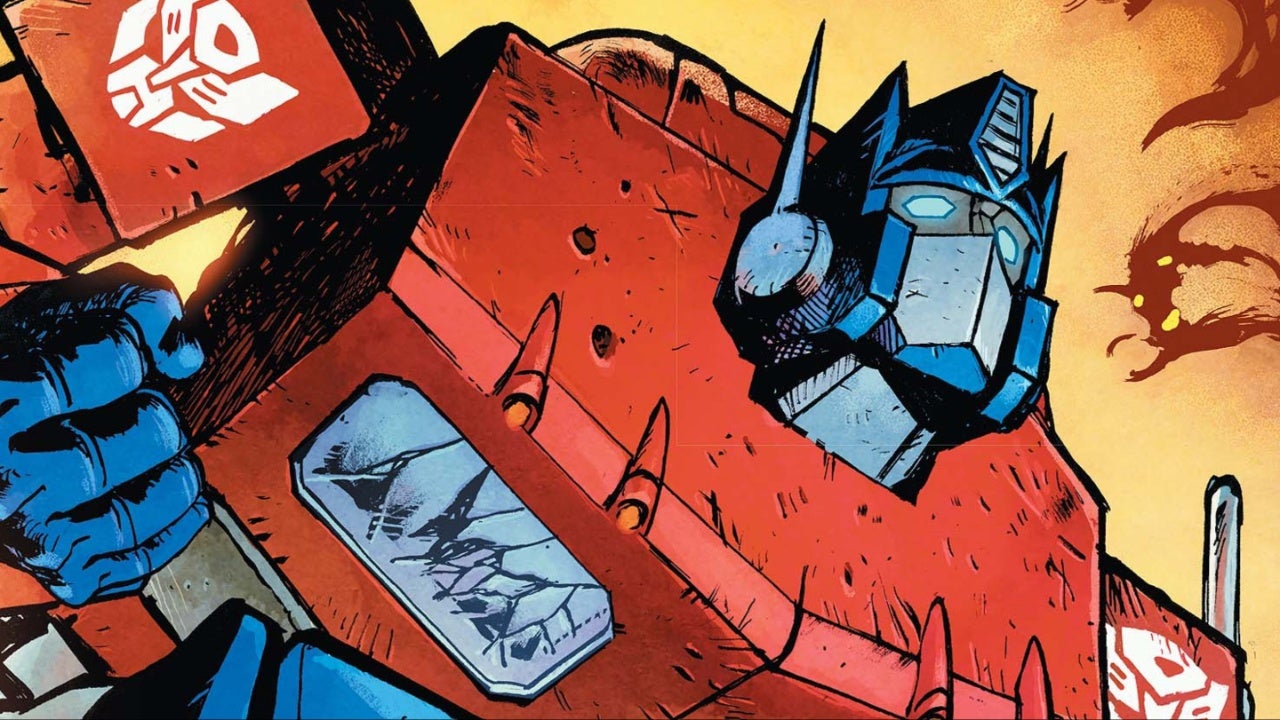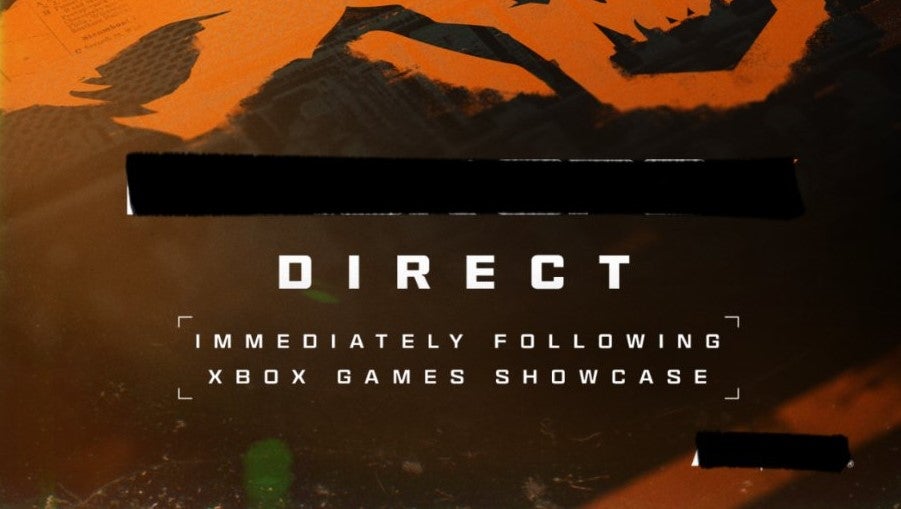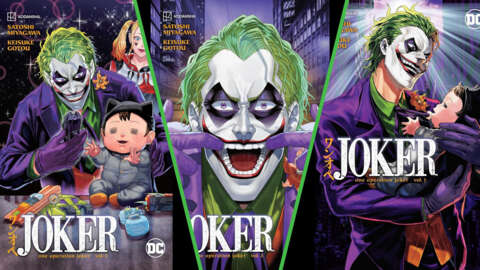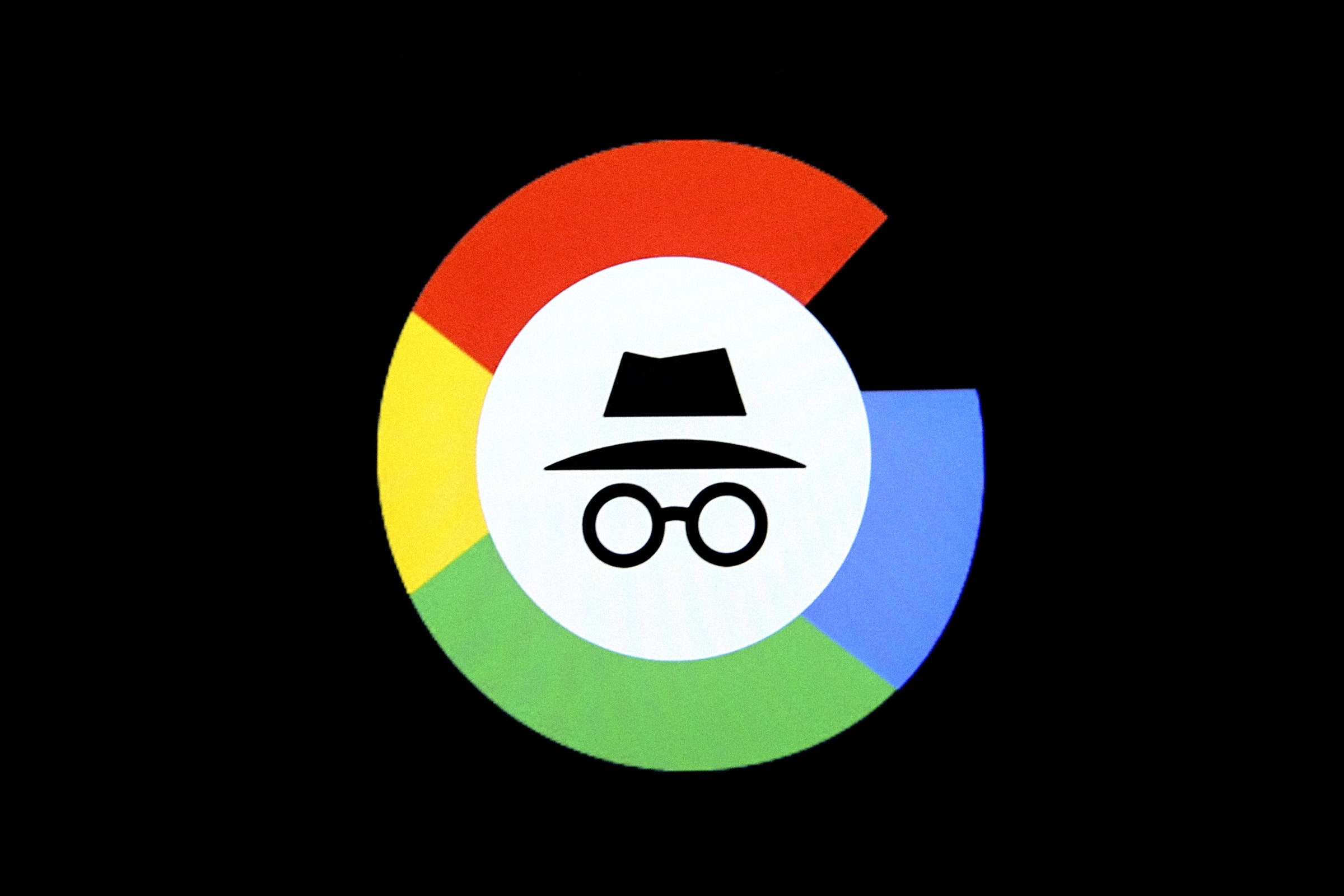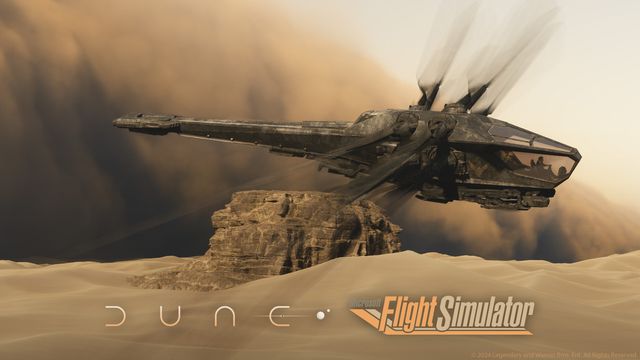The catchy theme song of The Transformers declared, “Autobots wage their battle to destroy the evil forces of the Decepticons!” Since it was a 1980s Saturday morning cartoon, the Decepticons were as bumbling as they were evil. Righteous Autobot leader Optimus Prime, though, had the true dignity of a hero, helped by actor Peter Cullen’s performance which wielded both authority and also the warmth of a father.
The newest Transformers comic, written and drawn by Daniel Warren Johnson, makes the Decepticons more lethal but remembers to make Optimus Prime the story’s soul. It goes back to the franchise's roots in order to reinvent it for a new era.
Skybound's Transformers Relaunch
Skybound Entertainment’s Energon Universe is the newest shared universe comic franchise and Transformers is the backbone of it. Skybound/Johnson’s Transformers is very much a back-to-basics story. The set-up mirrors The Transformers of 1984, both the cartoon and Marvel comic; the Autobots and Decepticons crash land on Earth, slumber for ages, and then are reawakened in the modern day. The Autobots befriend the humans, the Decepticons terrorize them.
The Transformers all have their Generation One designs so far, with Johnson penciling them — from Ratchet to Soundwave, from Arcee to Skywarp — as if they were pulled off reels of the cartoon. The human characters share the names of the cartoon’s cast too (Spike Witwicky, his father Sparkplug, and his girlfriend Carly).
Johnson only tinkers with the formula (e.g. Bumblebee’s red-colored twin Cliffjumper takes the former’s usual starring role) rather than tearing it down like the Transformers comics of the 2010s. (Brian Ruckley’s 2019 Transformers run at IDW Publishing followed the slow outbreak of the Decepticon vs. Autobot war, turning backstory into the story). That’s hardly bad, though.
Johnson excels at action scenes; by writing and drawing the series, he designs the fights in Transformers from the ground up. Pulling on his love for wrestling (read his wrestling-themed series Do A Powerbomb), he draws eye-catching mid-motion poses, guiding the reader’s eye from panel to panel. In his drawings, the Transformers themselves often stretch from the top of the panel to the bottom, feeling as huge as they’re meant to be.
Johnson’s latest issue, #6, features a splash page of Optimus Prime flipping the titanic Decepticon Devastator. The page is framed on its side as if the full weight of Devastator has got the panel box itself spinning. In these money shots, letterer Rus Wooton inserts colored onomatopoeia across the negative white spaces, as if the sound thunders across the environment.
That’s not to say all Transformers has going for it is the action — Johnson is also excelling at characterization. Thus far, his greatest Transformers achievement is his writing of Optimus Prime.
The True Strength of Optimus Prime
Peter Cullen, who’s kept playing Optimus Prime many times since The Transformers, is the character’s voice. I read Prime’s dialogue in Skybound’s Transformers comic in Cullen’s voice and with good reason. It’s mythic trivia among Transformers fans that before Cullen auditioned for Prime, his older brother Larry (a former Marine), advised him on how to play a hero. His words? “Be strong enough to be gentle.”
Those six words define Optimus Prime. Like other red, white, and blue heroes such as Superman and Captain America, he’s driven foremost by his compassion. He leads his Autobots with the care of a father and cherishes human lives no matter how small they must appear in comparison to his own. He can and does kick ass, but he’s a robot of action by necessity. Being a good guy takes strength, not weakness. As Prime’s archenemy Megatron observed in Transformers: More Than Meets The Eye #32 (written by James Roberts), “When [Optimus] hurts others, he hurts himself.”
The Transformers movies brought Cullen back to voice Optimus Prime, but they increasingly lost touch with the character (even if Cullen’s acting has always been up to par). Optimus has two modes of dialogue in those movies - solemn speeches and foreboding threats/one-liners to his opponents. In the headbanging action scenes, he tears apart his enemies with the viciousness of a villain, often shouting “I’ll kill you!” at them. 2018’s spin-off Bumblebee, praised for finally putting a Generation One-accurate Optimus Prime in live-action, still emphasized him as an action hero first and foremost.
Subsequent animated works, like Transformers: Prime (again featuring Cullen) and Transformers: Cyberverse (featuring Cullen impressionist Jake Foushee), thankfully toned down the violence but made Optimus emotionally reserved and uptight. These Primes have big hearts, but not bleeding ones. These series saw Optimus as too towering a figure to let the other characters engage with him as peers.
A Robot With a Bleeding Heart
That’s where Johnson differs, exemplified by the best scene in the comic thus far. In issue #2, Optimus is marveling at the beauty of a forest when he accidentally steps on a deer, killing it, and is horrified. The scene was inspired by a similar one from The Iron Giant, but whereas the Giant simply learned secondhand about death, Optimus experiences firsthand how fragile Earth’s life is, inspiring his resolve to protect it. The scene continues as Optimus and Spike talk, finding commonalities hidden in the vast differences between humans and Cybertronians.
When a franchise involves large-than-life (or skyscraper) characters, it’s easy for the human characters and their presence to feel like tiny annoyances. True for Godzilla, King Kong, and Transformers. Yet, when done well, a human perspective contrasts with and bridges the Transformers’ to the audiences’ own. Indeed, small, and for lack of a better word, human acts of kindness help cement Optimus Prime’s characterization because to him, they aren’t small.
1986’s The Transformers: The Movie introduced the idea that the Autobots' leader carries the powerful Matrix of Leadership. In that movie’s climax, young Hot Rod uses the Matrix to destroy planet-eating robot Unicron. When Optimus opens the Matrix in Transformers #4, it’s not to save a whole world, but just to restore a single hospital’s power and save the patients inside.
Issue #4 ends audaciously with a one-page spread of Optimus having taken Megatron’s salvaged right arm (including his mighty fusion cannon) to replace his own. Issue #5 picks up with cross-cutting flashbacks between Optimus and Sparkplug’s wartorn pasts, the two soldiers confiding about their similar scars. Optimus confesses he feels like he’s become “the very thing he’s fighting against” — he literally wields his enemy’s weapon, after all. (Johnson’s cover for the issue, with Optimus seeing his reflection in the fusion cannon, further symbolizes this idea.)
I don’t think this is foreshadowing any dark turn for Prime’s character where he becomes more hardened and ruthless. Rather, it's consistent with the fallible hero Johnson has been establishing these issues. In issue #6, when Optimus makes a plea for peace to Soundwave, the Decepticon sucker punches him — and so Optimus blocks it. “I desire peace, but I am no fool.” It takes strength to be gentle, and it takes compassion to be strong.
But what about the villains?
A Starscream To Be Scared Of
Starscream, the Decepticon Air Commander, was the most well-defined character in the original Transformers cartoon — even if he only had negative traits. He was greedy (wanting to overthrow Megatron as Decepticon leader), cowardly, selfish, arrogant, incompetent, you name it.
Starscream’s original toy character bio (showing how he was first envisioned) described him as “Very good at what he does, but sometimes overrates himself.” The show kept only the latter facet intact, even turning Starscream into comic relief; his schemes always blew up in his face and he suffered repeated physical punishment that would make Daffy Duck wince. Christopher Collins’ voice for Starscream even got progressively higher pitched as the show went on, any menace fading away into feebleness.
Subsequent shows and comics have walked the thin line between making Starscream cowardly and effective, but usually end up falling facedown on the former. In the movies, any characterization Starscream has is as Megatron’s punching bag. In Transformers: Prime, he’s introduced as downright scary (executing a captured Autobot before the first episode wraps), but in the long run, he just can’t hack it next to Megatron. Prime Starscream grows more and more pathetic as the series goes on; Steve Blum’s vocal timbre even grows higher-pitched just like Collins’ did.
The IDW comics and the currently-airing cartoon Transformers: Earthspark portrayed Starscream in a more sympathetic light, suggesting he’s burdened with self-loathing (unhelped by constantly living under Megatron’s steel heel). Johnson’s Starscream is as firm a rebuke to this idea as I can imagine. He’s not pitiable (whether because he’s an abject failure or has a hidden good side), he’s contemptible and proud of it.
Skybound’s Transformers comic follows what’s become a pattern in Transformers media; Megatron is out of the picture at first (more on his whereabouts here), so Starscream is acting as Decepticon leader in his stead. It’s easy to see why many writers have used this staggered character introduction. Holding back on Megatron builds up his menace while letting Starscream temporarily lead demonstrates why he always falls short. Johnson’s Starscream definitely struggles as a leader (promos for issue #7 suggest a frustrated Soundwave is about to mutiny), but not as a warrior. Across the first six issues, Johnson has written the most vicious Starscream yet.
In issue #1, just after Starscream is revived, he murders a deactivated Bumblebee. Then the issue ends with him crushing a human off-panel (all the reader can see is Starscream’s smirk and a “squish” sound effect styled like blood). Starscream keeps swatting humans like flies in issue #2, blasting two fighter jets out of the sky, and from there on he keeps relishing the chance to rack up his body count and challenge Optimus.
Starscream has often been impulsive (it's why he can never last long as a leader), but that now extends to throwing himself headfirst into battle and slaughter. This underlines the contradiction in past Starscreams; if he’s totally inept and too cowardly to fight, then how did he achieve such a high rank (and be in a position to usurp Megatron) in the first place? Here, though, it’s easy to see why he’s Decepticon second-in-command (even if does have too big an ego for his own good).
That said, Skybound Starscream is still a bully; note how he especially delights in killing humans and menacing Cliffjumper, the smallest Autobot around. Starscream’s defining relationship is with someone stronger than him: Megatron. Will Starscream revert to his cowardly ways once he’s no longer the big Con on the block? This first arc ends with the Decepticons routed and Starscream crippled (crushed when Optimus flipped Devastator), setting the stage for Megatron’s triumphant return. (Megatron was glimpsed deactivated in the Arctic in Transformers issue #4, while the Cobra Commander mini-series reveals he’s being held captive by the Commander himself.)
As for Optimus, I presume Megatron is going to want his arm back. Jorge Corona assumes art duties on Transformers on the upcoming seventh issue, but Johnson will remain the series’ writer and I’m happy these characters will stay under his pen.
Transformers, which celebrates its 40th anniversary this year, has been reinvented so much that going back to square one now feels like a transformation. Johnson understood how fans remembered Optimus Prime for his pure soul and Starscream because of his rotten one. Just like a well-running truck or plane, there’s no need to fix a character who isn’t broken.
For more on the current Transformers franchise, check out Target's exclusive Optimus Prime bundle and see our full ending explained for Transformers: Rise of the Beasts.
